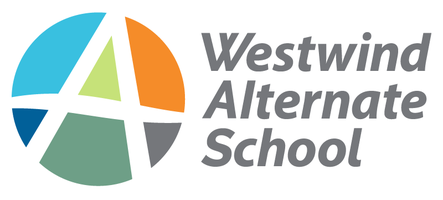HIGH SCHOOL OUTREACH
The Outreach Program is a very flexible grades 10 - 12 option with a variety of instructional delivery models and a number of different scheduling and attendance opportunities. Outreach provides the ability for students to be enrolled full-time at WAS or to be enrolled full time at their regular high school and simply take one course or a few courses at the Alternate School. We have Outreach locations at Cardston, Magrath, Raymond and Stirling.
Here is how it works:
- We have classrooms and teachers at each of our locations.
- Students come in, or Zoom in, for an intake meeting.
- Usually we will have students registering for a full-time Outreach program take a couple of diagnostic exams to see if they are ready for grade level coursework and where to start them. Courses are aligned with the Alberta Programs of Study and can often be taken either in print form or online.
- We will meet with the student and parent to discuss attendance options (how much at school vs how much at home) and select the courses to start with, the expectations and the progression through high school.
- Students work towards one of Alberta's High School Diploma or Certificate pathways.
- While at the campus, students usually work at their own pace in a classroom with a few others doing the same and who each may be working on different courses.
- The teacher is available to work with each student individually, or in some cases in small groups.
- Teachers schedule individual blocks of time for students to ensure each student gets personalized attention, and to manage the number of students who may be in attendance at any given time.
- We generally try to keep the same basic bell time schedule as the corresponding high school.
- We are increasingly using Hapara for course content, especially for students who are doing most or all of their work at home.
- The Outreach portion of a student's program has no parent or student funding.
- To register in the Outreach program
- Those enrolled at a Westwind high school should ask their Academic counsellor or an administrator about taking a course(s) at WAS. They can direct you to your next step. This usually involves coming over to one of our campuses to talk to a staff member. In most cases, this will involve scheduling a formal intake meeting; we want to ensure parents are aware of students' decisions to take Outreach courses.
- Students wanting a full time, primary school of registration, Outreach program should schedule an appointment or drop into one of our campus locations in the Spring to learn more about our programming and pick up an Outreach brochure. Formal intake meetings start the first week of classes in September. Students can enroll in the Outreach program through out the year until May 1st. A full time Outreach program can include some face-to-face classes at a Westwind community high school, provided space is available. Your Outreach teacher can direct you in this process. This typically involves you visiting to the high school to inquire about spacing and scheduling.
- Those intending to register in a school in "Westwind School Division", including WAS, must complete an online registration. Please visit Westwind's online registration portal.
- A Westwind registration is required before Outreach classes can begin. This enables our teachers to verify course pre-requisites and access other necessary intake information.
